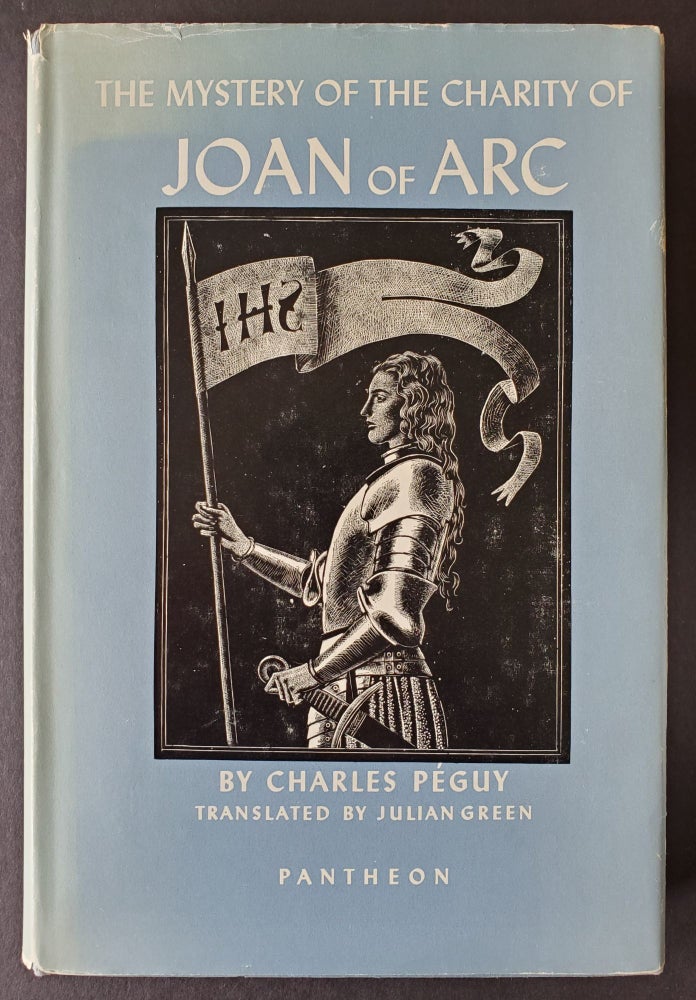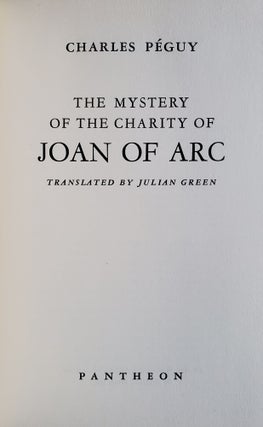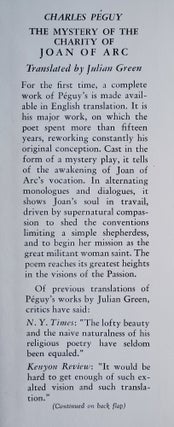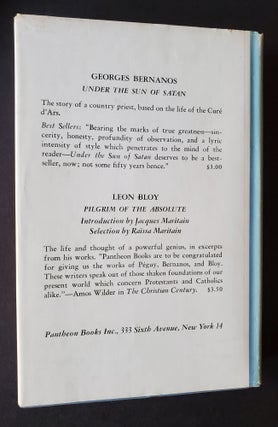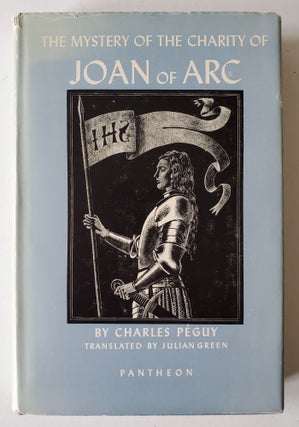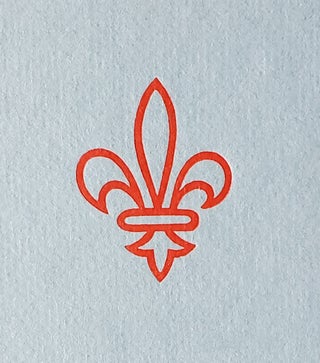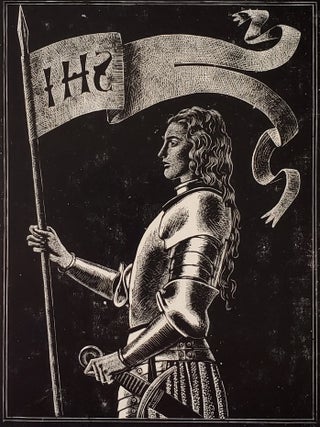The Mystery of the Charity of Joan of Arc; Translated by Julien Green
New York: Pantheon, 1950. First edition. Octavo, original blue cloth boards, decorated and lettered in red, original dust jacket. Early owner signature, tiny ink stamp to rear flap, faint edge-wear and toning to unclipped dust jacket. Very good indeed. Item #1189
"WHAT WE NEED, GOD, WHAT WE FINALLY NEED, IS A WOMAN WHO WOULD ALSO BE A SAINT...AND WHO WOULD ALSO SUCCEED."
First English translation of Charles Péguy's best-known work—complete with the original dust jacket with a portrait of Joan by Victor Hammer.
Born near Orléans, Charles Péguy maintained a lifelong interest in Joan of Arc, "Péguy literally 'deepened' his view and presentation of this legendary French figure as he became a Catholic" (Robert Royal). Joan, the "great militant woman saint," embodies the spiritual and temporal unity of France. "Péguy's Catholicism was closely allied with his love of France. Of him, as also of Psichari, it might almost be said that they were Catholics because they were Frenchmen. A non-Catholic Frenchman seemed a monstrosity, something cut off from the true life of his country" (Gerald Christopher Rawlinson). First published in France as Le Mystère de la Charité de Jeanne d'Arc (1910), just a few years before Péguy was killed at the Battle of the Marne. This edition was translated by Julien Green, with his short Foreword cautioning the reader on the peculiarities of Péguy's style: "No one that I know in French literature has ever had a greater appreciation of the values of written speech and in his speech as in his life, Péguy was the Frenchest of the French." A long poem in the style of a medieval mystery play, the monologues and dialogues—between Joan and Hauviette (representing the French peasantry) and Madame Gervaise (thought to be speaking for the Church)—demonstrate that both "the temporal and eternal dimensions are fully present in a very lyrical and evocative poetic text" (Robert Royal). Writing in a chanting rhythm in simple, repetitive phrases about the traditions of old, Christian France, the book hearkens back to a medieval tradition. "It is essentially an oral style," Edward Wagenknecht observes, "to realize its full power, one should read aloud. A good reader might well achieve a tremendous almost hypnotic effect, closer to that of the chant than to anything most of us are likely to think of as literature" (Chicago Sunday Tribune). The dust jacket reproduces a 1943 engraving cut on metal by Victor Hammer, "based on a drawing scribbled by a clerk of the Parliament of Paris in the margin of a record of 1429 which mentions the lifting of the siege of Orleans" (An Introduction to Victor and Carolyn Hammer). Robert Royal, A Deeper Vision: The Catholic Intellectual Tradition in the Twentieth Century. Gerald Christopher Rawlinson, Recent French Tendencies from Renan to Claudel.
Price: $200.00

